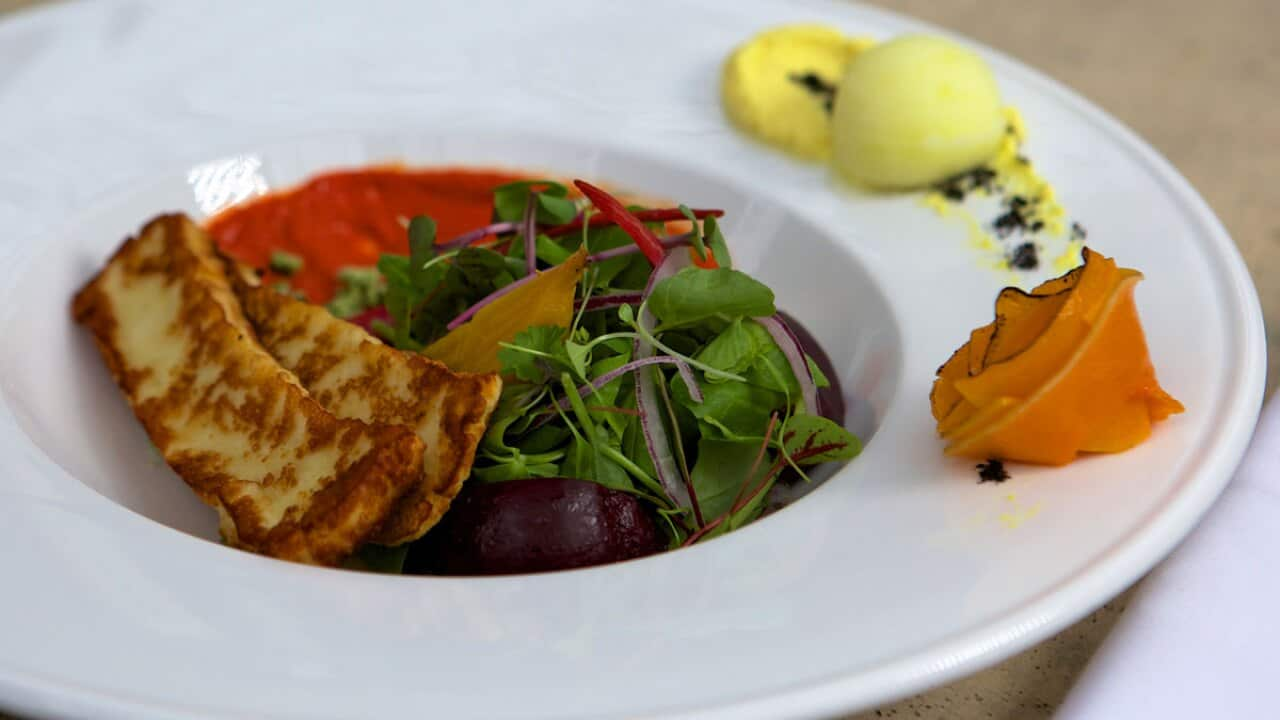Take a moment to think back to your childhood. Did you ever pick mulberries from a tree hanging over a local fence, rescue a fallen berry from a footpath or devour the produce found in your home garden?
If you've answered yes to any of these questions, then according to environmental educator, Diego Bonetto, you’ve already got a personal history as a ‘forager’.
“People tend to think of foragers as the old ladies running through the fields, carrying baskets as they collect food from a pristine environment that no one has touched,” expert forager, Bonetto tells SBS. “That's not really the case.”
Bonetto explains that up until very recently, foraging was a common practice all around the world including in Italy. Growing up on a farm in Northern Italy, young Bonetto and his sisters were tasked by their mother with foraging weeds of the season for both culinary and medicinal purposes.
But today in many cultures, he says, the practice of foraging has been lost.
The return of harvesting wild foods goes well beyond the flavour of the food or the economic value of the few berries you might collect.
Reclaiming a largely, lost practice
So what’s the big deal if we aren’t picking weeds from the ground and eating them? After all, there are supermarkets for a reason, right?
Bonetto doesn’t expect people to completely do away with modern food luxuries. But he believes that if we return to foraging – even if it’s just to collect a handful of edible weeds every now and again on a Sunday afternoon – we will reap mental, spiritual and physical health benefits.
“The return of harvesting wild foods goes well beyond the flavour of the food or the economic value of the few berries you might collect. That’s because we gain greatly when we engage with nature. The more you know about nature, the more you develop ecological empathy and the more you become involved. Foraging wild foods is empowering.”

Wild fennel and pumpkin soup. (Source: Eat Weeds by Diego Bonetto, published by Thames & Hudson Australia) Source: Hellene Algie 2022
For example, wild nettle has been used medicinally in folk remedies for centuries. Today, it’s commonly prescribed as a herbal supplement by naturopaths and used in tea as a blood purifier. Wild fennel has also been long used as a calming tea to help a troubled digestive system.
Live food is good food that you’re body will be happy with.
Edible plants, picked and eaten fresh, are not only a great source of nutrients but are the basis of so many cultural cuisines. Wild fennel seeds are common in Mediterranean and Middle Eastern dishes and can be used in soup as well as sauces. Wild lettuce leaves are renowned in Greek recipes, like hortopita (‘wild weeds’ pie).
Native spinach often forms the filling of the modern dumpling or pie. Dandelion, a favourite of Bonetto’s, is also a popular ingredient in Italian cuisine that can feature in a pesto or in a salad to add a bitter flavour.
“The shorter the distance between a wild plant and your stomach, the higher the level of nutrients that you will consume when you eat that wild plant," he says. "You will get the highest level of fibre and vitamins. Live food is good food that you’re body will be happy with.”
How to forage
Unless you’ve been raised knowing how to source wild food, foraging may feel like an overwhelming skill to learn.
Bonetto wants that to change. His book, , aims to teach people how to engage with wild food sources. Divided into locations – urban areas, seas, rivers, forests and your own backyard – Eat Weeds helps the reader to identify weeds. It also includes recipes and medicinal practices for the weeds found in each area.
The book is for all skill levels. However, if you’re only starting out, Bonetto has the following advice: “your first step is to slow down”.
“Start by watching. Look in your garden or, if you don’t have a garden, look at the plants in your neighbourhood. Start to understand the plants that you walk past every day. Then, slowly, build up your botanical literacy and the ability to see the differences between plants.”
Once you’ve learned about the appearance of local wild food, and know that it’s safe to eat and legal to source, Bonetto says you’re ready to cook and eat it.

Olives, found wild in nature, picked by hand. Source: Diego Bonetto
Eating wild foods
Bonetto explains two dishes that can be made with food growing wild along the East Coast of Australia right now.
“Let's start with something simple like African olives. Once you pick them, you can eat them raw or pickle them. You can also harvest the leaves to make an immunity tea.”
Bonetto adds that the Madeira vine is another edible weed of choice. “Madeira vine is a weed that you can cook by frying with olive oil and garlic. Once cooked, it tastes silky and yummy. It’s a great food to have as a vegetable side dish.”
It’s important to note that both of these wild foods have been declared aggressive weeds in many areas of Australia.
“Lots of people will tell you plenty of nasty things about these weeds and trees. The truth is that I agree with them. They are problematic plants. There are far too many of them in Australia.
“That’s why we should forage them and eat them all up.”






